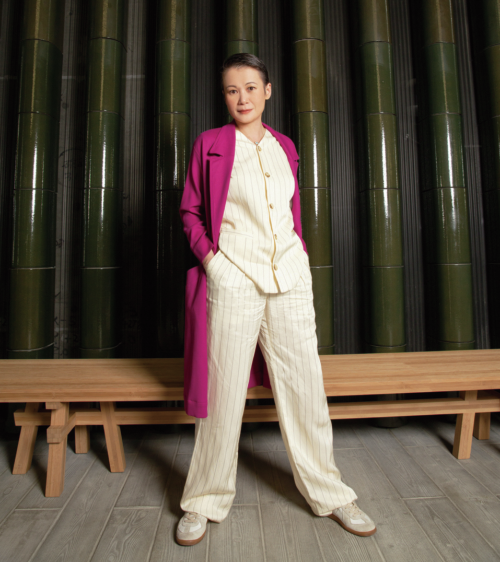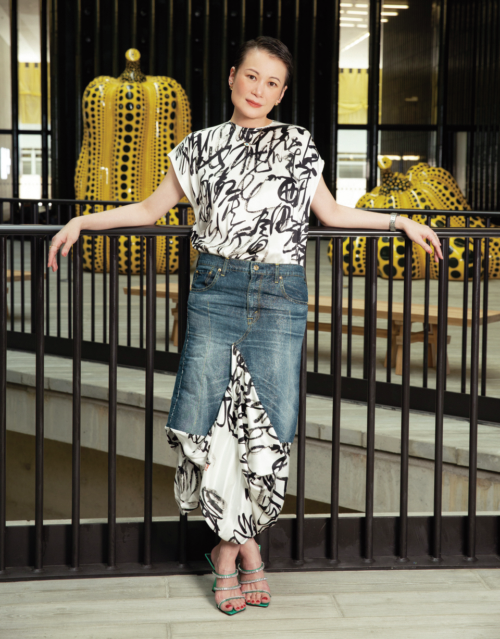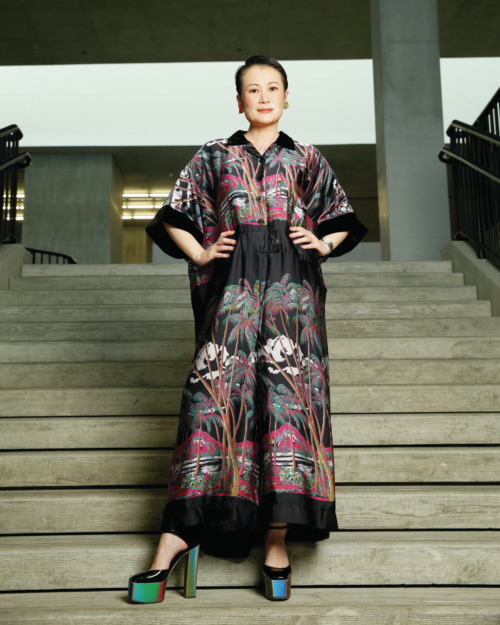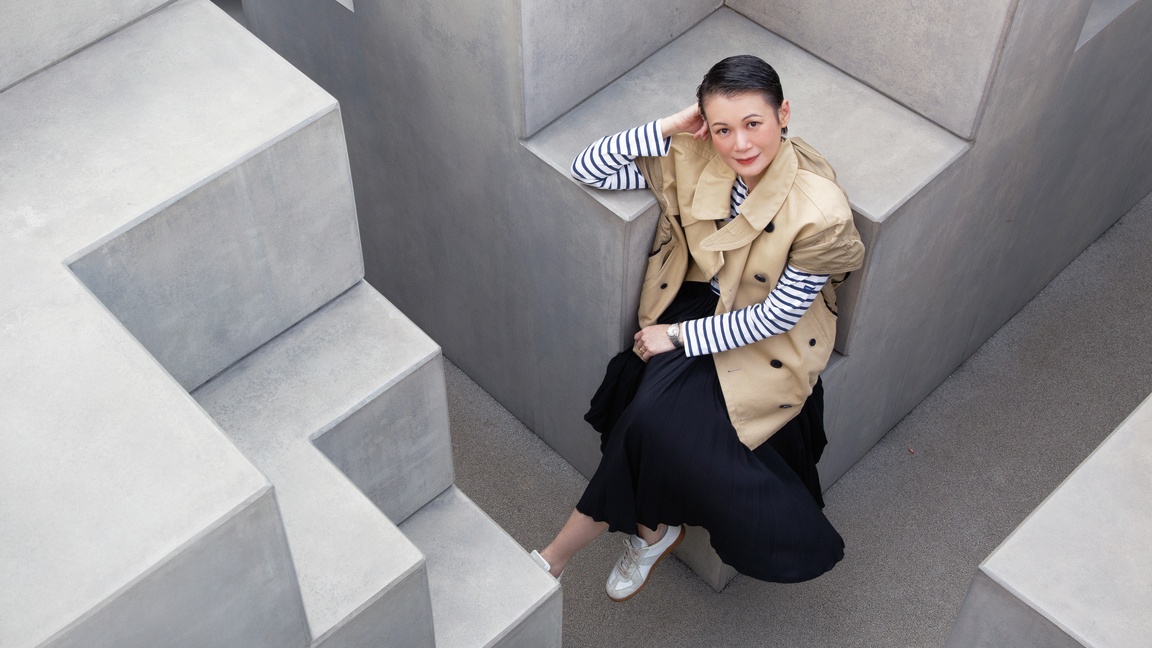How does one represent the Asian art scene? According to Adeline Ooi, Director Asia of Art Basel, it has come a long way, but there’s still a long line to take. “The art scene is ever evolving, so it’s really hard to claim that this is it, we’ve made it,” she says. “But we celebrate each win and I think over the past 10 years, some of the most rewarding aspects of it is watching the art sector grow not only in Hong Kong but across Asia as well.”
With just six weeks before the official opening of Art Basel in Hong Kong [held from 23-25 March], Ooi takes a break in mid-February to talk about matters of the art and of the heart. Arriving in casual clothes and sneakers, it is evident that she does things by her own rules, bringing and selecting clothes from her own wardrobe for the photo shoot. “No heels for me, please,” she advises the production team.

Of Malaysian descent and raised by parents who worked in the plantation industry, Ooi confesses that her love for art was more slow-burn than an immediate fiery passion. Growing up in rural Malaysia, she wasn’t particular about what she wanted to be – as long as she didn’t end up in a 9-to-5 job. “Gosh, I wanted to be a flight attendant, because as a kid I thought that’s the only way that I’ll get to fly everywhere,” she says with a smile. It was only in her teenage years that she decided to study fine arts at Central Saint Martins in London and ultimately returned to Asia to pursue an art-centric career. Staying true to herself is an Ooi ethos. Although her parents first disagreed with her decision to build a career in the arts, she persisted, working at Valentine Willie Fine Art and co-founding the RogueArt cultural agency in Kuala Lumpur.

She was appointed as Director Asia for Art Basel on Boxing Day 2014. “Was it like a Christmas gift? I can’t really tell because it meant landing with my skates on. It was both scary and exhilarating,” she says.
For her, in hindsight, a media interview with someone from the art sector was not necessarily imaginable during the late ‘90s, and a sit-down one-on-one chat is already a big indication that the Asian art scene is progressing. She says: “This interview is already a big feat. I remember in my 20s, a job in the art world means you have to be willing to do it with hardly any or very little pay and everything was in DIY set-up. There were just fewer opportunities for us Asians in general.”

Art imitates Life
It is often said that life imitates art, but for Ooi, it works the other way around. “Art may not be for everyone, so it’s really hard to say that our lives are the main inspiration of art,” she says. “I think that is something that we all need to understand. More than anything, I believe that art really documents the human story.”
Looking at the etymology of curating, it is hard to imagine how it ever became the profession that it is now. It was only in the later years of the 20th century that the term curator was applied to exhibition makers, eventually becoming the title for some of the art world’s big players – Ooi now among them. Now in a globalised digital age, she is redefining her own profession as it evolves once again and how art fits within today’s creative scene. “I personally don’t believe in the notion that collecting art has to relate to a great investment. Sometimes we love something, but we don’t necessarily have to own it. The best way to experience art is in the chance encounters at a museum.”
(Interview by: Joseff Musa, Photographer: Jack Law, Art Direction and Styling: Jhoshwa Ledesma,
Videographer: Jack Fontanilla, Hair & Makeup: Heti Tsang and Venue: M+)
Read the full interview in the April 2023 issue (pg: 100). Available on the Gafencu app on Android and Apple.



